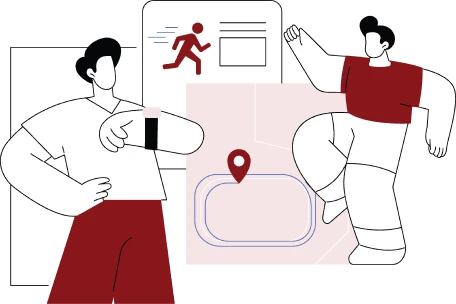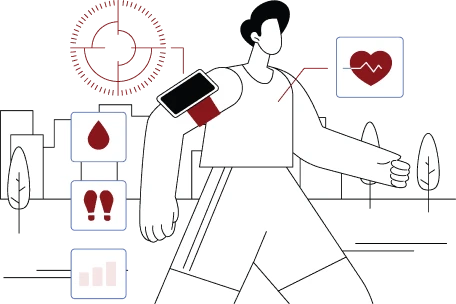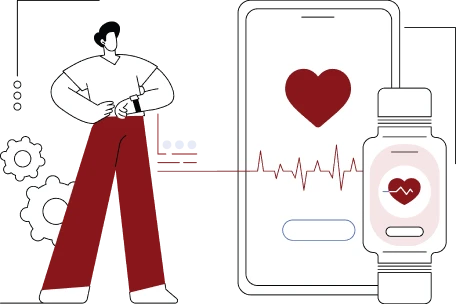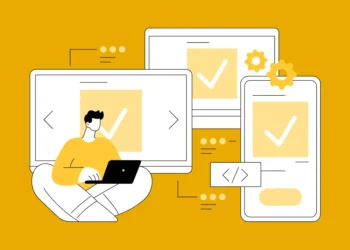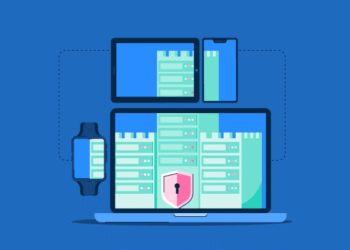Key takeaways:
- Cost Range: The development of a telemedicine app in the UAE costs between $45,000 and $500,000, depending on its complexity and features.
- MVP Strategy: Start with a Minimum Viable Product to validate demand and reduce initial costs by 40–60%.
- Cross-Platform Savings: Utilize React Native or Flutter to reduce development costs by 25–40% for both iOS and Android.
- AI Integration: Incorporate AI for triage, diagnostics, and personalization to enhance user experience.
- Compliance Focus: Adhere to HIPAA, GDPR, and UAE regulations to ensure data security and legal compliance.
Telemedicine is becoming one of the cornerstones of the Middle East, which is currently undergoing a digital health revolution. There is a significant buzz in the region regarding the increase in digital health, driven by the rapid technological advancements and other emerging healthcare needs, particularly since the pandemic. In this regard, telemedicine has emerged as a revolutionary factor, offering exclusive and comfortable delivery within the healthcare system.
Altibbi is an excellent example of such regional transformation, as it is listed among the largest Arabic-language telemedicine platforms in the region. It is a good way to link users and certified doctors around the clock via audio and video conferencing, and users have access to a rich source of medical knowledge.
Undoubtedly, telemedicience trends are shaping the healthcare future. Need proof?
The online doctor consultation market size was valued at USD 23.29 billion in 2024, and the total Online Doctor Consultation revenue is expected to grow at a CAGR of 9.02% from 2025 to 2032, reaching nearly USD 46.48 billion. (Source: Maximize Market Research)
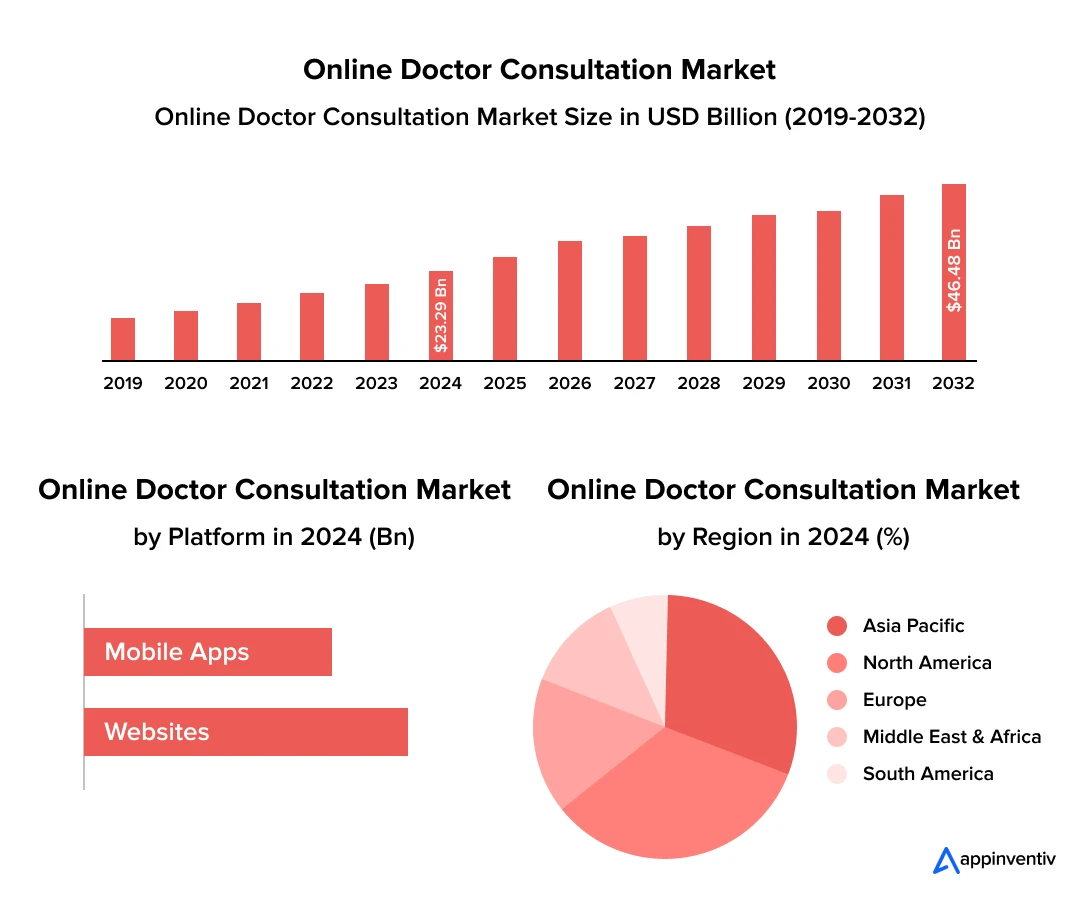
This level of market development implies that a new entrant can simply drop an MVP version and expect to achieve major success. Given that the source of competition is with big and established players in their markets, such as Altibbi, a new application must start with a mid-range to best-in-class feature set and user experience.
This directly affects the initial cost, placing it at the higher end of the spectrum. Nonetheless, the fixed demand and welcoming ecosystem also imply that there is a chance of greater profit on investment if the project is executed strategically and professionally.
Telemedicine app development cost in the UAE ranges from AED 1,65,285 to AED 18,36,500 and more ($45,000 to $5,00,000+), depending on the complexity, features, technology stack, and other factors.
This article is one of the few guides by an expert that demystifies the entire spectrum of the cost to build an app like Altibbi. Let’s explore the most detailed, step-by-step costing guide, carefully considering the needs of the Middle East market.
Join the $503.8 billion telemedicine revolution by 2032!
Build a cutting-edge app tailored for the Middle East’s booming digital health market.
Overview: Why Altibbi is Popular in the Middle East
Altibbi has become a highly effective telemedicine app in the Middle East, transforming the way healthcare is delivered in the region. This is how it has performed in terms of its popularity and some of its lessons to businesses seeking to develop an app on the lines of Altibbi:
Business-wise, the reason that Altibbi has been successful in the Middle East is down to:
- Filling a Defined Market Gap and Unmet Need: The MENA region has a high bar regarding healthcare access in the fields of general consultation and basic medical information. Altibbi recognized this gap and offered an easy, affordable, and convenient alternative to healthcare.
- The use of technology to promote efficiency and scalability: Altibbi has leveraged AI in telemedicine across various areas, including classifying Arabic medical queries and directing them to the correct specialists, thereby leading to increased efficiency and reduced errors.
Key Takeaways for Businesses Looking to Build an App Like Altibbi
To companies that would like to emulate the success experienced by Altibbi, the following are important lessons:
Focus on being Localized and Culturally Sensitive:
- Cultural Context: Knowledge of and adjusting to the cultural standard (e.g., the issue about privacy, gender preference in the doctor). A good example is the anonymous consultations of Altibbi.
- Local Regulations: Observe complete adherence to local healthcare laws and other data privacy requirements (i.e., local and HIPAA-like regulations in other regions).
Build a Diverse and Sustainable Model of Business:
- Consultations: Consider a combination of free services (e.g., health information) that attract users and high-value services (e.g., subscriptions, special consultations) that can be monetized.
- Value-added services: These services now such as online pharmacies, diagnostic lab test booking, or even a chronic disease management program, can complete the circle of the healthcare ecosystem.
Nurture your own Strong and Growable Technology Stack:
- Quality connectivity: The video, audio, and chat features should be of high quality and seamlessly integrated.
- Security of data: Strategize on data security, that is, implement the most robust security measures for important patient data.
- AI inclusion: Find out how AI can be used to increase efficiency (e.g,. triage, automatic answer to frequently asked questions) and personalize a user experience and better assist doctors with diagnosis.
With the help of these business-focused lessons and learning experiences, Altibbi clone app developers can be much more likely to succeed in a challenging and highly rewarding healthcare technology market.
A Comprehensive Overview of the Telemedicine app Development Cost in the UAE
Developing a comprehensive health consultation application, such as Altibbi, in the UAE, with its complex functionality and stringent requirements, is a significant undertaking. As previously revealed, the overall telemedicine app development cost in the UAE ranges from AED 1,65,285 to AED 18,36,500 and more ($45,000 to $5,00,000+). When planning to create a remote patient monitoring app in the Middle East, it’s essential to understand the various cost factors that will impact the overall Altibbi app clone cost.
Here’s the personal breakdown analysis. Following is a breakdown analysis of the costs segregated based on the complexity and phases of the development:
Cost Analysis Based on App Complexity
Based on the detailed breakdown and considering Altibbi’s comprehensive features:
| Functionality | Price Range | Features |
|---|---|---|
| Minimum Viable Product (MVP) – Basic Functionality | $45,000 – $150,000 | Profile creation, simple appointments, video/audio calling, basic chat, limited integrations |
| Medium Complexity – Feature-Rich App | $150,000 – $350,000 | Digital prescription, simple EHR-CRM integration, secure messages, payment gateway, medication reminder, and powerful dashboard |
| High Complexity – Comprehensive Platform | $350,000 – $500,000+ | Multi-user varieties, comprehensive integrations (EHR, labs, pharmacies), AI/ML functionalities, sophisticated analytics, and real-time monitoring. |
Cost Analysis Based on App Development Stages
Developing a robust telemedicine platform in the UAE involves more than just coding; it encompasses design, development, regulatory compliance, and ongoing support.
Design Phase (UI/UX – User Interface/User Experience)
This phase is crucial for creating an intuitive, accessible, and culturally appropriate app. For a healthcare app, clarity, ease of use, and a sense of trustworthiness are paramount.
Cost to build app like Altibbi Range: $10,000 – $50,000+
| Design Level | Description | Price Range |
|---|---|---|
| Basic Design | template-based, minimal customization | $10,000 – $25,000 |
| Moderate Custom Design | wireframing, branded visuals, responsive layouts, basic animations | $25,000 – $40,000 |
| Advanced Custom Design | interactive animations, micro-interactions, adaptive UX across platforms, complex data visualization | $40,000 – $50,000+ |
Development Phase (Frontend, Backend, APIs, QA)
This is the most significant portion of the cost, encompassing the actual coding and building of the app’s functionalities.
Frontend Development (User-facing applications)
This involves building the interfaces for patients, doctors, and potentially administrators (web panel), for both iOS and Android platforms. Altibbi offers web, iOS, and Android apps.
Cost Range: $60,000 – $250,000+
| Complexity Level | Features | Price Range |
|---|---|---|
| Basic | video/audio calls, chat, appointment booking, basic profiles | $60,000 – $120,000 |
| Medium | EHR integration, advanced search, payment gateway, push notifications, medication reminders | $120,000 – $180,000 |
| High | AI-powered medical diagnostics/chatbots, IoT device integration, complex analytics, personalized health plans, multi-language support, custom integrations | $180,000 – $250,000+ |
Key Activities:
- Patient App: Logging/registration, user profile, appointment scheduling, video/audio consultation dashboard, chat, prescription management within the application, lab result delivery, payment gateway, push notifications, and viewing health indicators.
- Doctor App/Panel: Doctor signing on and approval, doctor profile, appointment scheduling module, video/audio consultation platform, chat, e-prescribing, patient records access, billing, and schedule availability.
- Web-based: User management, doctor management, content management, analytics, payment management, reporting, system setting, and dispute resolution.
- Platform Choice: Choose between:
– Native (iOS Swift/Objective-C, Android Kotlin/Java): It offers the most targeted and firm quality, although it will be more expensive because two sets of code will have to be maintained.
– Cross-platform (React Native, Flutter): A single codebase that can be shared with iOS and Android, enabling rapid development and potentially lower costs, although it may prove non-optimal when used with highly complex/hardware-intensive functionality.
Bonus Read: React Native vs Native: What to choose for App Development
Backend Development (Server-side logic, Database, APIs)
It is the brain of the application and is responsible for storing data, authenticating the users, the logic of running business, and communicating between the frontend and external services.
Cost Range: $50,000 – $200,000+
| Complexity Level | Salary Range |
|---|---|
| Basic Backend | $50,000 – $90,000 |
| Medium Complexity | $90,000 – $150,000 |
| High Complexity (AI/ML integration) | $150,000 – $200,000+ |
Key Activities:
- Database Development / Management: Safe storage of patient information, doctors, appointment calendar, prescriptions, consultation history, etc. (e.g., PostgreSQL, MongoDB, and MySQL).
- API Development: Developing an Application Development Interface (APIs) that enable the frontend apps to talk to the backend.
- Server Logic Implementation: Implementation of all the business logic (e.g, matching patients to doctors, processing payment, and sending notifications).
- Security Implementation: There should be the use of powerful encryption, authentication, and authorization (HIPAA/HAAD/DHA compliance is an essential factor here).
- Scalability Planning: Incorporating the backend in such a way that it becomes able to manage an increasingly high number of users and data.
Also Read: Advantages of Encryption Technology
Third-Party API Integrations
Telemedicine apps often require integration with various external services.
Cost Range: $10,000 – $100,000+ (highly dependent on the number and complexity of integrations)
| Integration Type | Cost Range |
|---|---|
| General Integration | $2,000 to $25,000+ |
| EHR Integration | $10,000 – $50,000+ |
Key Integrations:
- Video Conferencing SDKs: To have secure and good quality video/ audio calls (e.g., Twilio, Agora, Zoom SDK).
- Payment Gateways: Local UAE payment gateways integration (e.g., Stripe, PayFort) to take consultations payments and to take subscriptions (e.g., Stripe, PayFort)
- Electronic Health Records (EHR/EMR) Systems: In the case of wanting to achieve interoperability with clinics or hospitals. This is an intricate and quite expensive incorporation.
- SMS/Email Gateways: Notice/Reminder.
- Lab Management Systems (LMS) / Pharmacy Management Systems (PMS): To order tests or prescriptions.
- AI/ML Services: Chatbots, diagnostic support, predictive analytics.
- Cloud Services: Healthcare enterprises require a platform to host, store, and scale their data (AWS, Azure, Google Cloud).
Quality Assurance (QA) & Testing
Thorough testing is paramount for healthcare app development UAE to ensure accuracy, security, and reliability.
Cost Range: $15,000 – $60,000+ (Typically 15-20% of total development cost)
| Total Development Cost | Amount |
|---|---|
| Frontend + Backend + Integrations + QA | $135,000 – $610,000+ |
Key Activities:
- Functional Testing: Making sure that everything works like it should.
- Usability Testing: Testing the satisfaction/usability/usability testing.
- Performance Testing: Determining action and reactivity on demand.
- Security Testing: Identifying vulnerabilities and ensuring data security (essential in healthcare).
- Compliance Testing: Checking the observance of the rules in the sphere of healthcare (HAAD, DHA, HIPAA, GDPR).
- Regression Testing: Ensuring that new features do not break existing ones.
Deployment Phase
This will entail preparing the app and releasing it to users.
Cost Range: $5,000 – $40,000+ (Excluding ongoing marketing budget)
| Service | Cost |
|---|---|
| App Store Fees | Apple: $99/year, Google: $25 one-time |
| Legal & Compliance Consultation | $5,000 – $20,000+ |
| Initial Server Setup | Typically covered within the initial cloud hosting costs |
Key Activities:
- App Store Submission (Apple App Store, Google Play Store): Making listings, screenshots, and descriptions, following guidelines.
- Server Setup & Configuration: Electronic infrastructures, databases, and needed services.
- Security Audits & Certifications: Acquiring the required certifications for handling healthcare data in the UAE.
- Compliance & Legal Review: Making sure that all the legal regulations concerning the functioning of a telemedicine service in the UAE are covered (licensing, data protection, rules of medical practice). This plays a major role in the UAE.
- Marketing & ASO (App Store Optimization): A breakdown in the application stores.
Bonus Read: 70 Points Checklist for App Store Submission
Maintenance Phase (Ongoing)
There is nothing like a finished app. Security, performance, bug fixing, and competitiveness require continuous maintenance. App maintenance costs are essentially recurring expenses that are calculated on an annual basis.
Cost Range: 15% – 20% of the initial development cost annually.
For an app costing $200,000 to build, annual maintenance could be $30,000 – $40,000.
| Cost Item | Cost Range | Notes |
|---|---|---|
| Bug Fixes & Updates | $5,000 – $15,000 | per year |
| Server & Database Costs | $2,000 – $10,000 | per month (depending on user load and data volume) or $24,000 – $120,000 per year |
| Third-Party API Subscriptions | Highly variable | Ongoing fees for video conferencing, payment gateways, etc. |
| Customer Support & Monitoring | $10,000 – $30,000 | per year (can be in-house or outsourced) |
| New Feature Development | Additional cost | Not typically part of basic maintenance |
| Regulatory & Legal Compliance | Variable | Ongoing consultation and audits may incur additional fees |
Key Activities:
- Bug Fixing / Hotfixes: Address any problems that emerge after the launch.
- Software Updates: Making compatible with the new version of an operating system (iOS, Android) and third-party APIs.
- Security Updates: Update vulnerabilities to ensure the privacy of sensitive data in patients.
- Performance Monitoring & Optimization: Optimizing the app in order to maintain its speedy responsiveness.
- New Development & Feature Enhancements: This involves adding new features to products or services inspired by user responses, industry trends, or business expansion (e.g., moving to an online pharmacy/diagnostics, as in the case of Altibbi).
- Server & Database Maintenance: Backups, Scaling, and Infrastructure Management.
- Regulatory Compliance Updates: How to respond to the updates in healthcare regulations in the UAE.
Discover the true cost of your feature-rich telemedicine app!
Connect with our experts to bring your vision to life with top-notch features.
Features of a Telemedicine App Like Altibbi That Surpass Competitors
To surpass your competitors, focus on the key features of a telemedicine app like Altibbi. Integrating trendy and innovative AI-powered features can set your app apart by enhancing user experience, personalization, and convenience. Below are some cutting-edge AI features tailored for a patient-centric telemedicine app, designed to appeal to modern patients and outshine existing solutions:
Core Patient Module Features
| Feature | Description | Estimated hours |
|---|---|---|
| Registration and personal healthcare management | Users initiate the process by registering via their mobile numbers and then receive verification codes to continue. | 10-15 |
| Appointment access and calendar cooperation | The platform facilitates swift access to doctors, often within minutes, 24/7. Patients readily book, reschedule, or cancel visits online. | 35-300 |
| Voice or text medical consultations | As the core service, this permits smooth communication with certified practitioners. | 70-420 |
| Personal health records and patient portals | A centralized dashboard enables the maintenance of healthcare files, tracking of diagnoses, and secure access to test results and visit summaries. | 60-200 |
| Medication and appointment reminders | Critical alerts provide timely prompts for medication doses and important medical appointments, enhancing adherence to therapies. | 8-16 |
| Electronic prescriptions | Patients can securely obtain e-scripts directly from licensed doctors through the app, simplifying the medicine process. | 30-150 |
| Extensive medical knowledge and resources | Offers an abundant catalogue of articles and insights covering various diseases and wellness topics. | 50-100 |
| Share diagnostic reports | Allows for the secure attachment and sharing of lab results and images with consulting practitioners for optimal recommendations. | 40-80 |
| Payment options | Users select suitable subscriptions and payment methods within the app. | 20-50 |
Core Doctor Module Features of Telemedicine App Like Altibbi
| Feature | Description | Estimated Expansion Hours |
|---|---|---|
| Doctor Portal Development | Individual pages for healthcare experts listing personal details, image, experience span, educational credentials, area of expertise, license, and availability. | 90 |
| Visit Scheduling | Robust tools empower doctors to efficiently organize, manage, and follow up on patient meetings and repetitive consultations. | 300 |
| Digital Medical Files (DMR) / Digital Health Records (DHR) Access | Seamless integration permits medical service providers to access a complete view of a patient’s medical history, test results, and visit summaries during consultations. | 100-300 |
| E-prescription | Function for healthcare experts to write, administer, edit, review, and securely transmit medical prescriptions to patients from a distance. | 70-150 |
| Remote Patient Observation (RPO) | This module enables doctors to stay connected around the clock, obtaining continuous and secure data flow from integrated medical devices and wearable tech for mHealth. | 200-400 |
| Symptom Analyzer | An auxiliary, often AI-powered, feature helps patients track potential symptoms and receive preliminary suggestions. | 250-500 |
| Internal Data Interchange | A crucial feature for collaborative care is enabling multiple doctors involved in a patient’s treatment to share information with each other securely. | 50-100 |
Core Administrative & Security Features
| Topic | Description | Estimated Development Hours |
|---|---|---|
| Privacy, data security, and confidentiality | Implementing robust frameworks for healthcare data protection and stringent encryption methods for files containing sensitive health records. | 120 |
| Adherence to global regulations | Compliance with local legislation, including the ICT Health Law of the UAE, FISMA-Ready Framework to Secure Federal Health Data, and the Personal Data Protection Law in Saudi Arabia. | 150-300 |
| Notifications Engine | A system for sending automated notices, reminders, and alerts to patients and physicians to solve medical issues and improve treatment adherence. | 80 |
| Analytical Tools | Incorporating data analytics in healthcare for examining usage patterns, outcomes, and performance over time to support data-driven decision making. | 100-200 |
Factors Influencing the Telemedicine App Development Cost in the UAE
Developing a telemedicine app like Altibbi involves multiple factors that influence the overall cost. These factors determine the complexity, time, and resources required for development. Below is a comprehensive table outlining the key factors, their impact on the development process, and the estimated Altibbi app clone cost implications.
| Factors | How It Impacts | Impacted Cost (in USD) |
|---|---|---|
| UI/UX Design Complexity | User interface design, which sets the first impression, must be both intuitive and intricate, incorporating animations and ensuring accessibility for all. | $5,000 – $20,000+
(Simple: $5,000-$10,000; Complex: $15,000-$20,000+) |
| Backend Development | Standard tools facilitate progress while specialized integration incurs specialized skill costs. | $10,000 – $50,000+
(Basic: $10,000-$20,000; Advanced: $30,000-$50,000+) |
| Backend Technology Stacks | Module integration expands functionality, yet licensing and coding each connection compound expenses. | $5,000 – $15,000+
(Varies based on stack complexity and developer rates) |
| Third-Party Integrations | Integrations with EHR system software add functionality but require additional development and licensing fees. More integrations increase complexity and cost. | $5,000 – $25,000+
(Per integration: $1,000-$10,000, depending on complexity) |
| Security and Compliance | Developing across platforms increases coding and testing needs compared to a single system. | $10,000 – $30,000+
(Basic compliance: $10,000; Advanced: $20,000-$30,000+) |
| Platform Selection | Developing for multiple platforms (iOS and Android) increases costs due to platform-specific coding and testing requirements. | $10,000 – $40,000+
(Single platform: $10,000-$20,000; Multi-platform: $25,000-$40,000+) |
| Advanced Technologies | Incorporating AI, machine learning in healthcare, or AR/VR increases development complexity, requiring specialized skills and longer timelines. | $15,000 – $50,000+
(Basic AI: $15,000-$25,000; Advanced ML/AR: $30,000-$50,000+) |
| Feature Complexity | Basic additions incur basic costs, while complex offerings, such as behavioral simulations or medical augmented reality, stretch timelines. | $10,000 – $60,000+
(Basic features: $10,000-$20,000; Complex features: $30,000-$60,000+) |
Approximations presented vary by location, defined objectives, and specifications. For a customized projection, it is recommended to confer with a development group.
What are The Hidden Costs in Telehealth App Development?
The initial development cost is a single fragment in a much larger equation. For a telemedicine app to thrive, it must endure and demand perpetual reinvestment to retain functionality, fortify security and compliance, and outpace competitors in the long run. Don’t underestimate these recurrent, frequently obscure costs is a common miscalculation among fledgling enterprises.
Server & Infrastructure Hosting Fees
Hosting infrastructure comes at a continuing outlay on virtual platforms like AWS, Azure, or Google Cloud.
| Service | Cost Range | Frequency |
|---|---|---|
| Basic Hosting | $70-$350 | Monthly |
| Basic Hosting | $840-$4,200 | Yearly |
| Complex Healthcare App Hosting | $3,000-$10,000 | Monthly |
| Hosting and DevOps | $2,000-$6,000 | Monthly |
| HIPAA-compliant Data Storage | $2,000-$10,000 | Monthly |
| AWS Infrastructure | $8,000-$15,000 | Yearly |
Regulatory Consulting & Legal Fees
Compliance with evolving healthcare regulations requires specialized counsel when in-house expertise is lacking.
| Cost Range | Ongoing Expenses | Percentage of Project Value |
|---|---|---|
| $10,000-$30,000 | Updates, audits, and navigating new regulations | 5-10% |
Insurance & Liability Coverage
Due to the handling of sensitive health data and the provision of medical guidance, telemedicine apps require specific insurance, including cyber liability, professional liability, and general business insurance.
| Premium Range | Factors Affecting Premium |
|---|---|
| $5,000-$25,000 | User Volume, App’s Feature Set, Scope of Services |
Payment Processing Fees
Payment processors deduct a transaction fee, typically 2.9%, plus a fixed fee of $0.30. For monthly transactions totaling $100,000, the fees would amount to $3,000.
| Transaction Fee Percentage | Fixed Fee per Transaction | Monthly Transaction Amount | Monthly Fees |
|---|---|---|---|
| 2.9% | $0.30 | $100,000 | $3,000 |
Dedicated Support Staff
Most flourishing telemedicine platforms require human assistance to address technical issues, provide medical advice, moderate submissions, and manage provider accounts, incurring an annual cost.
| Cost Type | Cost Range |
|---|---|
| User Support | $30,000-$100,000/year |
Strategies to Optimize Your Telemedicine App Development Cost in the UAE
Given the significant capital required to develop a comprehensive telemedicine application, strategic planning is crucial for optimizing expenditures without compromising quality, security, or adherence to regulations.
Beginning with a Minimum Viable Product (MVP)
An MVP focuses solely on developing the core functionality necessary to validate market demand and gather early user feedback. This approach necessitates fewer temporal and financial resources and can markedly decrease initial development costs by an estimated 40-60%.
Core MVP features:
Generally includes secure user registration, basic messaging, payment integration, fundamental video consultations, and constrained Electronic Health Record (EHR) access.
Phased Development Approach:
Rather than trying to build all desired capabilities simultaneously, evolving the application in intended phases is a more manageable and financially prudent strategy. This involves:
- Phase 1: Concentrating on core functionality (e.g., scheduling, video calls).
- Phase 2: Introducing enhanced capabilities (e.g., EHR integration, electronic prescriptions).
- Phase 3: Adding advanced abilities (e.g., AI, sophisticated analytics, specialized care modules).
This phased approach enables iterative funding, continuous incorporation of user feedback, and adaptation to evolving market needs and regulatory landscapes.
Bonus Read: 21 Solid Ways to Validate Your Minimum Viable Product
Leveraging Cross-Platform Development
Utilizing cross-platform frameworks, such as React Native or Flutter, enables telemedicine software developers in the UAE to write a single codebase that can be deployed on both iOS and Android devices. This approach can lead to significant savings, estimated at 25-40% compared to developing separate native applications for each platform.
This strategy is particularly ideal for MVPs and can substantially accelerate time to market. The interplay of technology choice, talent pool, and regional regulations is a complex one. Cross-platform development offers savings, but its suitability depends on the app’s need for deep device integration. The availability of developers proficient in specific frameworks in the chosen region also influences this choice.
Furthermore, adherence to regulations might influence the choice of certain SDKs or cloud services, which in turn affects expenditure.
Smart Team Selection
Careful selection of the development team is paramount for budget optimization. This involves:
- Balancing Cost and Quality: Choosing development teams from regions with competitive hourly rates (e.g., Eastern Europe, or strategically within the Middle East).
- Prioritizing Expertise: Opting for agencies with a proven track record in healthcare domain expertise, strong security practices, and familiarity with regional regulations, even if their rates are slightly higher than generic developers.
- Negotiation and Leverage: Negotiating effectively with API vendors and leveraging pre-built or low-code integration platforms where feasible can also contribute to cost reduction.
Outsourcing Development: A Cost-Benefit Analysis for the Middle East
The location where development teams reside has a significant impact on total expenses, as pay rates fluctuate extensively globally.
Worldwide Benchmarks:
North America (the United States and Canada) commonly demands $150-$250 per hour, Western Europe $100-$170 per hour, Eastern Europe $40-$80 per hour, India $25-$50 per hour, and Southeast Asia $20-$40 per hour.
Also Read: Guide to Healthcare IT Outsourcing
Middle East Specific Details:
Consider the provided table, which addresses regional cost specifics (United Arab Emirates, Saudi Arabia, Egypt), offering concrete hourly wages for various experience levels within the target markets. This crucial information enables the calculation of staffing costs throughout the project phases.
UAE
| Job Title | Average Salary (Local Currency) | Hourly Rate (Local Currency) |
|---|---|---|
| Mobile App Developer | 120,000 – 300,000 AED | 120 – 600 AED |
| UI/UX Designer | 7,000 AED/month | N/A |
| Quality Assurance Tester | N/A | N/A |
| Project Manager | 270,612 AED/year | 130 AED |
Saudi Arabia (KSA)
| Job Title | Average Salary (Local Currency) | Hourly Rate (Local Currency) |
|---|---|---|
| Software Engineer | N/A | N/A |
| International Software Engineer | 20,000 – 50,000 SAR/month | 100 – 500 SAR |
| Local Software Engineer | 10,000 – 30,000 SAR/month | N/A |
| Project Manager | N/A | N/A |
Egypt
| Job Title | Average Salary (Local Currency) | Hourly Rate (Local Currency) |
|---|---|---|
| Software Developer | 388,390 EGP/year | 187 EGP |
| Software Developer (Alternate Source) | 119,857 EGP/year | N/A |
Save up to 70% by outsourcing to the UAE, KSA, or Egypt. Compare regional rates—$32-$160/hr vs. $150-$250/hr in North America.
Appinventiv: Your Best Tech Partner For Outsourcing Telemedicine App Development
In this dynamic and ever-changing landscape of healthcare driven by advances in AI and digital technologies, Appinventiv has emerged as a prominent mobile app development company based in Dubai, recognized for its extensive experience within the industry.
Recognized for our role in helping to streamline and improve the delivery of medical care, we have positioned ourselves at the forefront of the digital health revolution by offering comprehensive digital transformation solutions tailored to meet the complex needs of a diverse range of international clients, including those based in Dubai and Saudi Arabia.
Our broad network of partnerships and proven track record provide compelling reasons for any organization within the healthcare field to engage our services as they seek to leverage telemedicine and navigate its technical complexities.
Where we excel is in crafting customized, high-performance telemedicine apps designed with an emphasis on speed, security, and seamless functionality – empowering providers to offer patients efficient virtual care experiences. As a leading mobile app development company in Dubai, we create bespoke solutions that serve to enhance patient care, optimize data management, and incorporate stringent security practices, all while ensuring adherence to crucial regulatory standards and frameworks, including HIPAA, GDPR, HL7, and FHIR. Our approach integrates cutting-edge technologies, including AI, IoT, and data analytics, to streamline clinical workflows, reduce errors, and propel digital healthcare innovation forward.
Our Comprehensive Healthcare App Development Services
As a premier healthcare app development company, our comprehensive suite of service offerings is tailored specifically for building telemedicine and other digital health solutions, with an emphasis on adhering to critical industry standards governing user experience design, data regulation, and security, as well as the incorporation of emerging technologies.
In addition to development, we offer strategic consulting services to help navigate technical complexities and ensure regulatory compliance.
- Custom-built Healthcare Solutions: We specialize in developing robust, secure electronic health records systems tailored to each client’s specific needs. Our focus is on optimizing usability, allowing medical professionals to access vital patient information efficiently.
- Holistic Integration: A hallmark of our work is facilitating seamless connection and exchange of data between various platforms—from electronic medical records and billing to labs—enabling timely access to patient data and improved coordination of care.
- Modernizing Legacy Infrastructure: We also upgrade outdated systems, transforming them into agile, scalable cloud-based architectures leveraging cutting-edge analytics. This ensures client systems are future-proofed for sustainable growth.
Our Commitment to Healthcare Regulatory Compliance
We firmly declare our steadfast commitment to adhering to crucial healthcare regulations and standards, most notably HIPAA, GDPR, HL7, and FHIR. This unwavering dedication forms the bedrock of our strategy for building secure HealthTech applications.
Our solution portfolio incorporates robust information security measures, ethical information management, and complete adherence to industry-specific regulatory requirements. Privacy and security are integral to our design, development, and deployment processes, ensuring that sensitive patient data remains safely protected while harnessing the full potential of digital health innovation.
Proven Track Record of Success: Key Projects and Client Endorsements
Both qualitative and quantitative metrics underscore our extensive experience in healthcare. With over nine years of experience in the industry and more than 1,600 specialists, we’ve received numerous awards for our work. To date, our portfolio comprises over 500 successful healthcare projects, a testament to our proven ability to transform patient care through innovative technology.
Some exemplary case studies demonstrate our commitment to advancing standards of care:
YouCOMM:
For one hospital network, we developed a custom app that enables real-time medical assistance through manual, voice, or gesture controls. This reduced nurse response times by 60% and was later adopted by five additional hospital chains across the US.
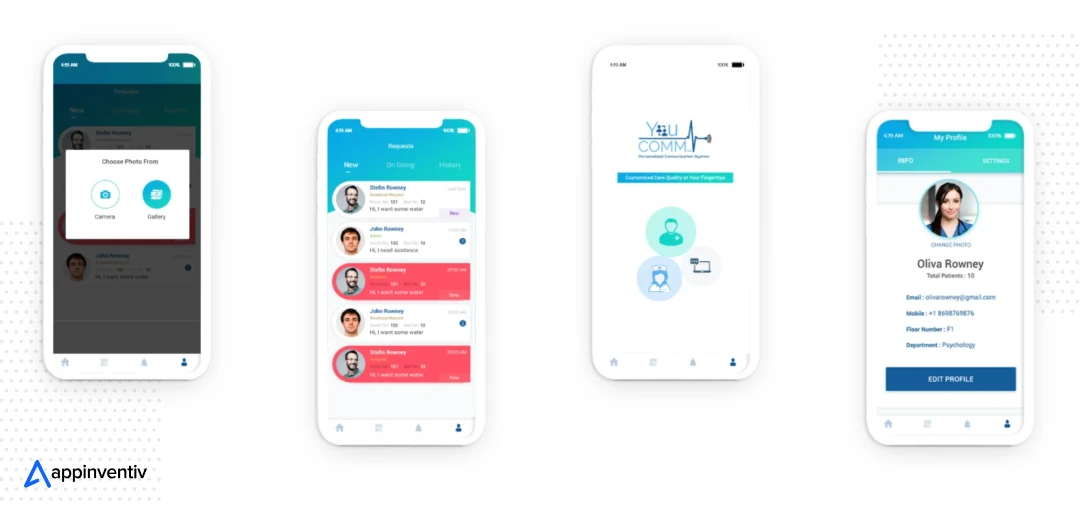
DiabeticU:
An AI-powered platform seamlessly extracts and analyzes patient data to enhance diabetes management and care. By automating documentation and ensuring HIPAA compliance, it has significantly improved data accuracy and individualized treatment for countless patients, while reducing costs by 30%.
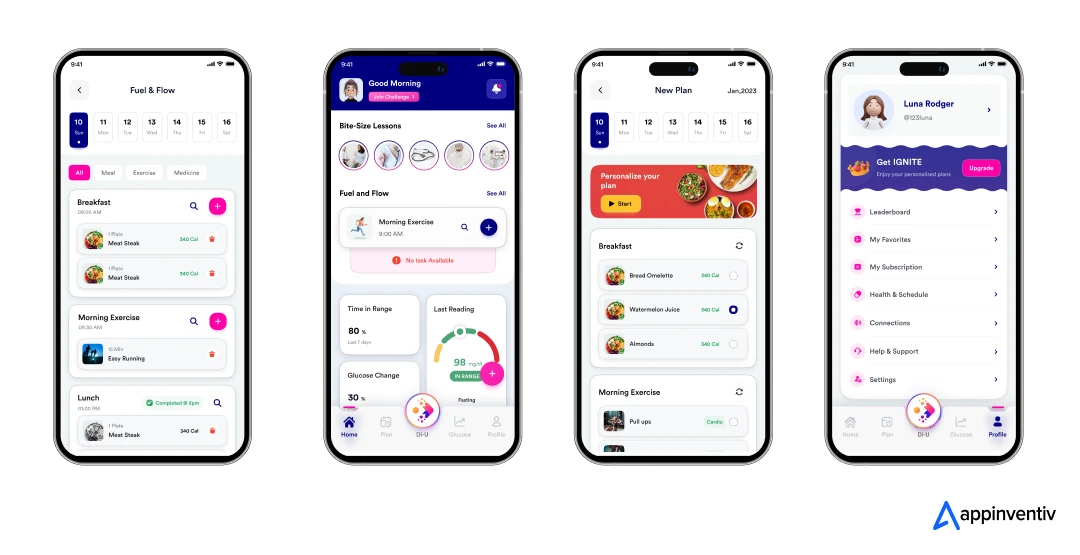
Soniphi:
A mobile application utilizing bioacoustics science analyzes 94% of a user’s vocal information through resonance frequencies and 3D displays to provide a comprehensive analysis of their well-being. It innovatively decodes vocal nuances for accurate wellness insights.
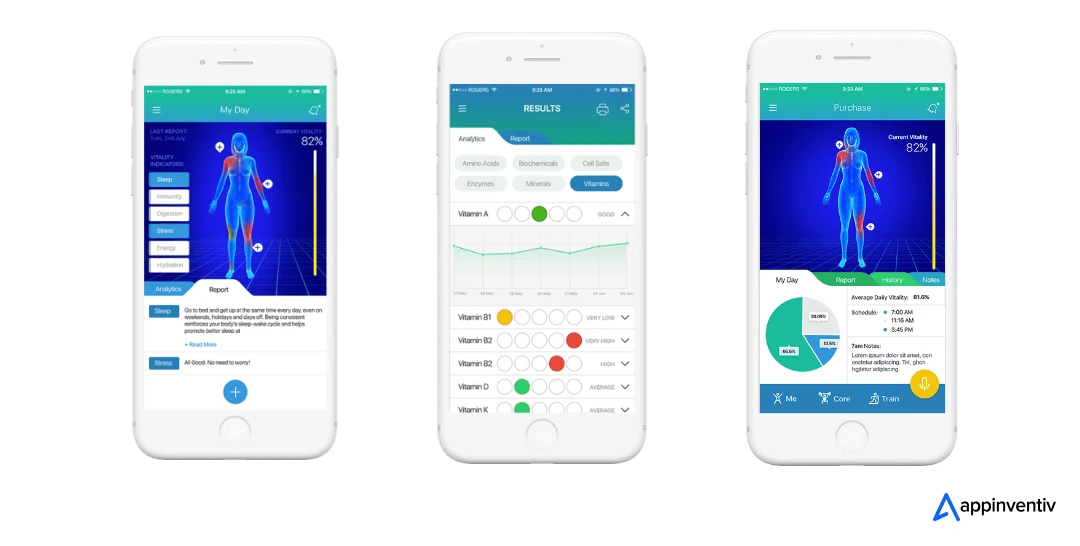
Health-e-People:
As a dedicated health assessment application designed as an online community, it allows users to consolidate all medical data, connect with caregivers, and contribute to research studies. Aggregating information from over 200 devices and programs, it offers predictive and prescriptive healthcare analyses through personalized profiles.
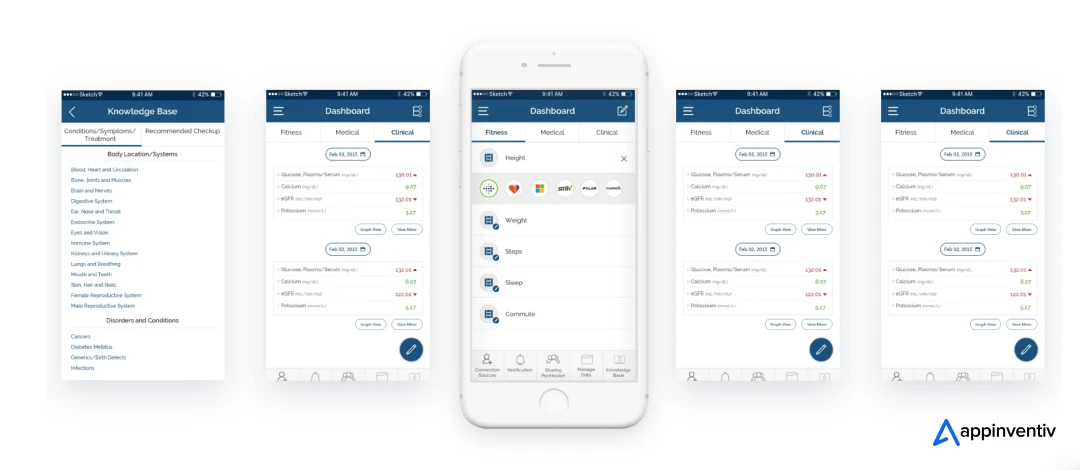
Looking to create a cutting-edge healthcare app like Altibbi? Collaborate with us at Appinventiv to develop a secure, scalable, and user-focused solution customized to your vision. Our team of expert developers and designers will work closely with your team to understand your objectives and the needs of potential users.
FAQs
Q. What features should a telemedicine app include to meet UAE regulations?
A. A telemedicine app in the UAE must meet regulations by the Dubai Health Authority, Ministry of Health and Prevention, and UAE’s Telehealth Guidelines for legal operation and safety. Features necessarily include:
- Secure,encrypted video calls of high quality for real-time doctor-patient interactions private as UAE’s data protection laws.
- Seamless access to medical histories through electronic health records, ensuring continuous care and following DHA/MOHAP standards
- Capability to issue and store digital prescriptions acceptable at UAE pharmacies, with cloud-based storage for accessibility anywhere.
- End-to-end encryption, multi-factor authentication, and adherence to UAE’s Federal Law No. 2 of 2019 on health data privacy to safeguard sensitive information.
- Convenient interface for booking, rescheduling, or canceling appointments with calendar syncing and reminders.
- Integration with secure payment options like PayPal and Stripe for consultation fees according to UAE financial regulations.
- Observance of DHA’s Telemedicine Guidelines including informed consent, patient verification, and audit trails for consultations
- Support for Arabic and English to serve UAE’s diverse populace.
- Integration with wearable devices for real-time health data tracking, useful in chronic disease management.
These features ensure the app meets UAE’s strict healthcare and privacy regulations while providing a seamless user experience.
Q. Is it better to build or white-label a telemedicine app for hospitals in the Middle East?
A. Choosing between in-house telehealth app development Middle East or choosing a pre-packaged solution relies on the medical institution’s demands, funds, and timeline in the Middle East region:
Customizing an App In-House:
Advantages:
- Provides total customization to align with distinct medical workflows, branding, and local standards (e.g., DHA/MOHAP compliance).
- It allows integration with existing electronic health records and systems and supports innovative capabilities like artificial intelligence diagnostics or internet-of-things technologies for scalability.
- Ideal for sizable medical centers or networks aiming for unique patient experiences and long-term growth.
Drawbacks:
- Higher initial expenses ($100,000–$300,000+)
- Lengthier development period (4–8 months)
- Continuing maintenance costs
- Requires a dedicated development team and familiarity with healthcare regulations.
Pre-Packaged White-Label Solution:
Benefits:
- Cost-effective ($20,000–$80,000)
- Swifter to deploy (1–3 months)
- Making it suitable for smaller clinics or startups
- Pre-built capabilities like video consultations, scheduling, and billing can be customized.
Weaknesses:
- Restricted customization may not fully align with intricate medical workflows or particular regional needs.
- Reliance on the provider for updates and support can be a downside.
Recommendation:
- Sizeable Middle Eastern medical centers with distinctive workflows or those aiming for a competitive advantage should construct custom apps for flexibility and scalability.
- Smaller clinics or those needing expedited deployment should opt for white-label solutions to save time and expense, provided the platform supports UAE/GCC regulations and integrations.
Q. What is the ROI of building a telemedicine app in GCC?
A. The Return on Investment for telemedicine apps in the Gulf nations is driven by escalating digital healthcare demand and supportive governing policies in the region. Key factors influencing ROI include:
- Market Demand: Projections show the GCC telemedicine sector growing at an annual rate of 20-25% through 2030, propelled by rising smartphone use, healthcare costs, and rural population needs for remote care. Apps like Altibb and Practo exhibit strong user adoption.
- Cost Savings: Telemedicine apps minimize unnecessary visits to hospitals, reducing operational expenses by 10-15% while optimizing resource allocation. Patients save travel time and costs too, augmenting contentment and retention.
- Revenue Streams: Monetization via subscription models, per consultation fees, or teaming with pharmacies and insurers can yield considerable returns. A UAE pharmacy chain, for instance, heightened their brand visibility and profits through a telehealth app development Middle East.
- Estimated ROI: Contingent on user adoption and monetizing strategy, hospitals anticipate a 20-50% ROI within 2-3 years, with higher yields for integrated, scalable apps across regional healthcare systems.
Q. How much does healthcare consultation app like Altibb cost to build & maintain in UAE?
A. Total Estimate: Building an app like Altibb costs $40,000–$500,000+, with annual maintenance of 15% – 20% of the initial development cost. Outsourcing to cost-effective regions and using scalable cloud solutions can optimize costs.
Q. What tech stack is best for scalable telemedicine solutions?
A. A robust and secure telemedicine application demands a scalable technical infrastructure to satisfy growing user demand across the diverse UAE region. Recommended solutions incorporate versatile:
- Frontend frameworks like React or Vue for responsive interfaces optimized for any device. React Native and Flutter foster cross-platform mobile apps to reduce costs through shared codebases.
- Backend architectures leveraging Node with Express or Django’s Python advantages handle real-time processing demands. Laravel remains a preferred PHP option for its AI prowess empowering intelligent chatbots.
- Data storage necessitates flexible databases like MongoDB or PostgreSQL compliant with sensitive health data directives. FHIR compatibility ensures easy exchange with regional healthcare records.
- Infrastructure deployed to AWS, Azure, or GCP clouds guarantees scalability, protected health information security, and adherence to local data residency policies.
- High-definition, encrypted video consultations are made possible through WebRTC integration or Twilio communication utilities.
- Encryption, authentication, and conformity with regulations including HIPAA, GDPR, and UAE Law No. 2/2019 safeguard sensitive user information.
- Artificial Intelligence technologies such as TensorFlow for diagnostic analytics, IoT integration for wearables, and Kubernetes containers optimize flexible scaling.
Q. What’s the average time-to-market for launching a doctor consultation app?
A. The time-to-market for developing a doctor consultation mobile application depends greatly on its planned complexity and overall design approach. Whether aiming for the bare minimum viable product or a fully-featured solution integrated with existing healthcare systems, certain factors influence the development cycle.
- Basic App (MVP): 3–5 months. Includes core features like video calls, scheduling, and basic security. Suitable for startups or small clinics.
- Mid-Level App: 5–8 months. Adds EHR integration, e-prescriptions, and multi-platform support. Requires more testing for UAE regulatory compliance.
- Advanced App: 8–12 months. Includes AI diagnostics, advanced analytics, and custom integrations with UAE hospital systems (e.g., DHA/MOHAP standards).
- White-Label Solutions: 1–3 months for deployment, as they use pre-built platforms with customization for branding and compliance.
Q. Do doctor consultation app costs differ based on the type of consultation (chat, audio, or video)?
A. Yes, doctor consultation app cost can vary by consultation type. Chat consultations are often the cheapest or free, while video or audio calls typically cost more due to direct interaction with doctors.
Q. Can a healthcare app be built to meet DHA or MOHAP regulations?
A. Yes, building a healthcare app development UAE to align with regulations from Dubai Health Authority and the Ministry of Health and Prevention is achievable but requires attentiveness to key considerations:
Compliance is critical, particularly concerning sensitive patient information:
- Strict data privacy and security protocols must be established per Federal Law No. 2 of 2019 and telemedicine guidelines, ensuring end-to-end encrypted transmission and secure storage of protected health records.
- Digital consent acquisition and identity verification of users before medical consultations is also important.
- All physicians utilizing the platform must hold active licensure by the respective regulatory bodies or register as out-of-country practitioners approved for telehealth.
- Maintaining comprehensive documentation of consultations, prescriptions, and system access is prudent for audits.
- Standardizing integration with UAE hospital systems demands adopting recognized interoperability frameworks such as HL7 and FHIR for seamless interfacing with electronic health records.
Development Approach:
Partnering with a bespoke healthcare development team proven in navigating Emirati healthcare rules facilitates constructing features meeting DHA and MOHAP standards, including secure video conferencing, electronic prescriptions, and multilingual support.
Q. How does the choice of development platform impact the doctor appointment app development cost?
A. Single Platform (iOS or Android): Costs $15,000–$75,000, as development focuses on one operating system. Cross-Platform: Using frameworks like React Native or Flutter, costs range from $20,000–$100,000, saving time compared to separate native apps.
Q. Build vs Buy: Should we develop our own Altibbi-like app?
A. There are various considerations before deciding form Build vs Buy:
Pros of Building the App:
- Fully customizable platforms align perfectly with regulations set forth by UAE’s Department of Health and the Ministry of Health and Prevention.
- Integration capabilities exist for unifying systems across hospitals. Unique features such as artificial intelligence for diagnostics and Arabic interfaces can also be developed.
- This presents an ideal avenue for differentiation and scalability.
Cons of Building the App:
- Significant financial investment is required.
- Implementation takes half a year to a year (Depend on development company you choose). Ongoing maintenance and updates demand significant cost annually.
Best For:
Larger healthcare facilities within the UAE and GCC region possessing budgets that exceed $80,000 with needs for tailored solutions.
Pros of Buying a White-Label App :
- More affordable costs ranging from $30,000 to $200,000.
- Go-live occurs within 1 to 3 months.
- Core functionalities involving telehealth and electronic prescriptions are incorporated.
- Initial expenses are lower.
- Suitable for quick market access.
Cons of Buying a White-Label App :
- Limited customization options and reliance on the provider.
- Potential issues may arise concerning scalability.
Best For:
Small to medium-sized clinics within the UAE and GCC with restricted budgets or pressing schedules.
Recommendation:
- Develop internally for larger hospitals requiring bespoke features and long-term return on investment.
- Procurement is advised for smaller practices prioritizing speed and cost.
- Ensure compliance with Federal Law No. 2 of 2019.
- A hybrid approach starting with a preexisting solution and transitioning to customization balances both considerations.


